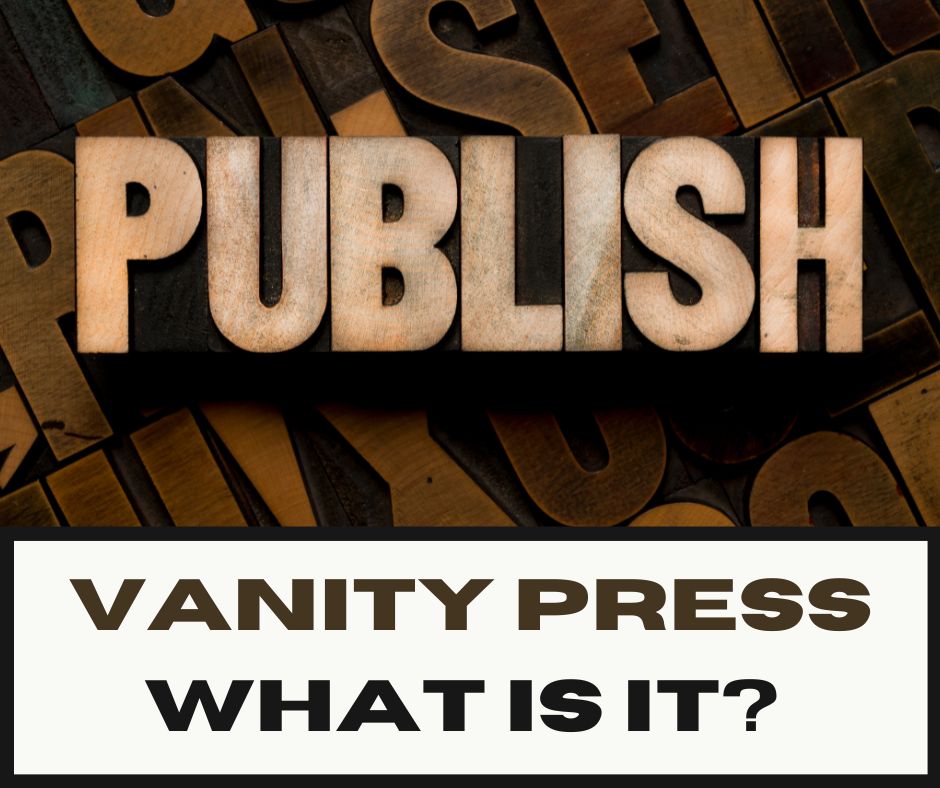The most well-known methods of publishing are the traditional publishing house and the self-publishing website. However, there are many other publishing routes available as well, including the vanity press.
What is Vanity Publishing or Vanity Press?
Authors who pay to have their books published do so through a vanity press or a subsidized publisher. Unlike traditional publishing houses, which want to profit from each book they publish and so turn down the vast majority of submissions, vanity presses will print anything an author is willing to pay. The publishing industry makes a distinction between self-publishing and vanity publishing.
Due to their lack of vetting, vanity presses are looked down upon more than commercial publishers. Despite higher prices than comparable printing services and the need for occasional restrictive contracts, vanity presses give authors more freedom than traditional publishing.
Vanity presses aim for the author and a small group of fans, whereas commercial presses go for the masses. It’s not uncommon for vanity-published writers to purchase large quantities of their books to give away as promotional materials.
The term “vanity press” is derogatory since it suggests the author is publishing for personal gain rather than financial success. A vanity press may keep the published work and charge for editing, cover art, and marketing services. To make a buck, vanity publishers may mislead or overpay authors. Clients who feel wronged can file a complaint with the Better Business Bureau in the United States.
How does Vanity Press Work?
In the conventional approach, the publisher decides which works will be published, does any necessary editing on the material, issues the ISBN, and takes care of any essential legal deposits and copyright registration. The writer is paid in advance and receives royalties from the book’s sales.
With self-publishing, the author retains complete authority over all aspects of the book, including the creative process, editorial direction, production, promotion, and sales. Many people who publish their works have considered getting them professionally printed. Peter Finch, a poet who self-publishes his work, claims that working with a vanity press increases the author’s asking price and hurts their chances of being published traditionally.
Using print-on-demand technologies, some vanity presses offer services to help authors who publish their own works. Contracts that do not claim exclusive rights to the work being published though one would be hard-pressed to find a legitimate publisher willing to put out a competing edition, making non-exclusivity meaningless and direct indications of what services will be provided are hallmarks of reputable businesses of this type.
Despite the fact that the worst of these companies are essentially vanity presses, the low prices have attracted tens of thousands of authors who wish to escape the stigma of vanity publishing while doing so. Magazines and newspapers that print only for profit
The “vanity press” method is used by other publications. Some companies create videos, music, and other works with low commercial potential for a fee. Original material may be inserted into existing pieces by the company .These forms of vanity publishing are much less common than their book-based counterparts. Without any form of editorial oversight, fake or vanity academic journals are free to publish.
Sometimes “vanity” photography magazines may print photos taken by non-professionals. These vanity photography magazines charge photographers subscription fees after their images are published, unlike traditional vanity press publishing, which sets writers a fee before publication. In fact, many vanity photography publications generate most of their revenue from charging submission fees or selling print copies to the photographers who submit.
History
Affluent authors in the 19th and early 20th centuries often paid out of pocket for their own books to be printed. Authors could have more say in their work’s direction and financial success.
In 1941, the term “vanity press” made its debut in established American periodicals. In that year, C. M. Flumiani was sentenced to 18 months in a US prison for mail fraud for his scheme to promote books, edit them and operate as an agent to obtain publications for his own publishing company.
By 1956, the top three American vanity presses, which were called “Vantage Press, Exposition Press, and Pageant Press,” each put out more than 100 titles a year. To get his 1939 lipogram novel Gadsby published, Ernest Vincent Wright turned to a vanity press.
Put simply, a vanity press is a publisher that profits not from selling books but from asking authors to pay for publication costs. Of course, there are a lot more nuanced differences; this description makes it simple to confuse genuine self-publishing businesses with frauds.
